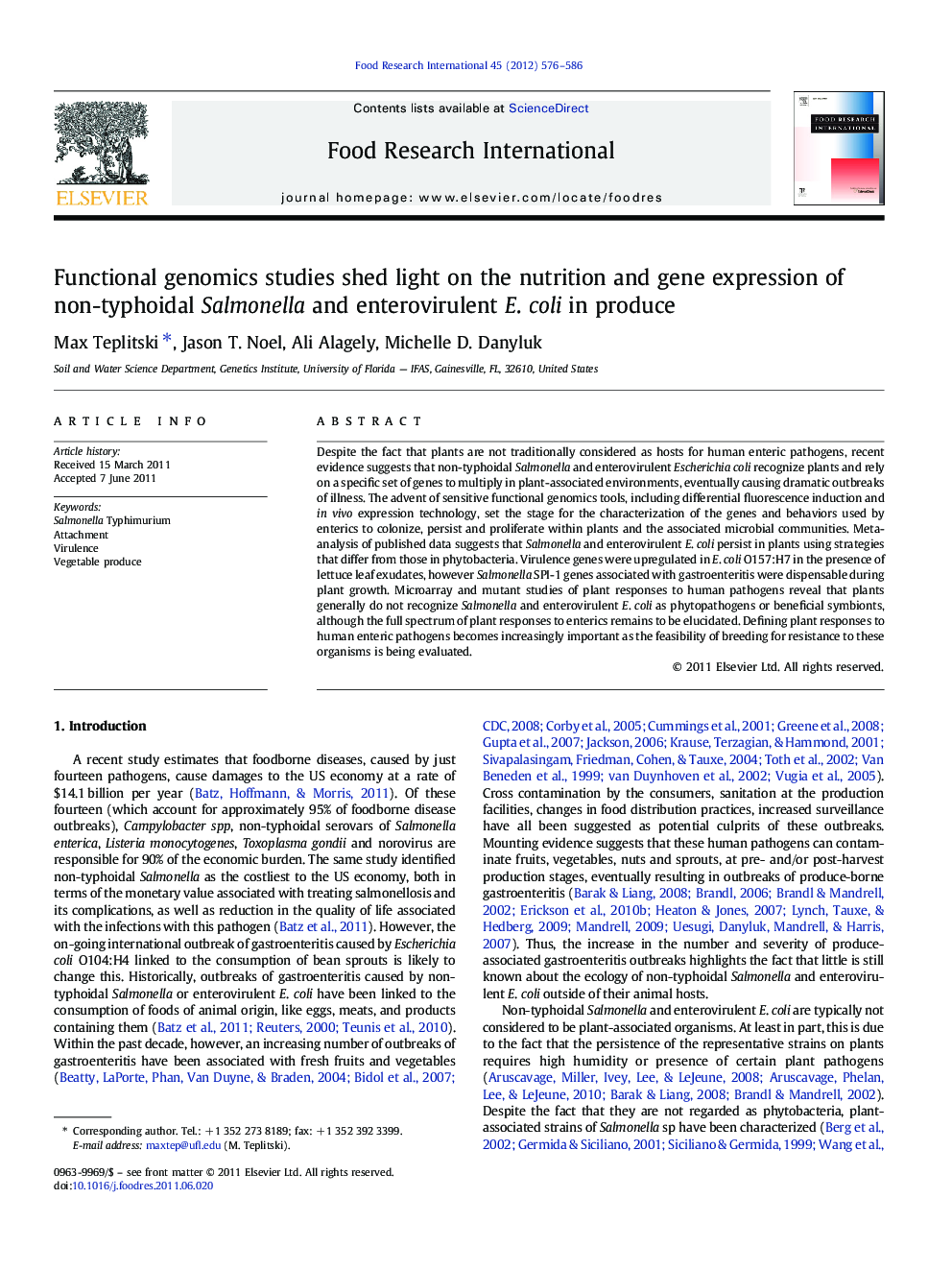| کد مقاله | کد نشریه | سال انتشار | مقاله انگلیسی | نسخه تمام متن |
|---|---|---|---|---|
| 4561706 | 1330688 | 2012 | 11 صفحه PDF | دانلود رایگان |

Despite the fact that plants are not traditionally considered as hosts for human enteric pathogens, recent evidence suggests that non-typhoidal Salmonella and enterovirulent Escherichia coli recognize plants and rely on a specific set of genes to multiply in plant-associated environments, eventually causing dramatic outbreaks of illness. The advent of sensitive functional genomics tools, including differential fluorescence induction and in vivo expression technology, set the stage for the characterization of the genes and behaviors used by enterics to colonize, persist and proliferate within plants and the associated microbial communities. Meta-analysis of published data suggests that Salmonella and enterovirulent E. coli persist in plants using strategies that differ from those in phytobacteria. Virulence genes were upregulated in E. coli O157:H7 in the presence of lettuce leaf exudates, however Salmonella SPI-1 genes associated with gastroenteritis were dispensable during plant growth. Microarray and mutant studies of plant responses to human pathogens reveal that plants generally do not recognize Salmonella and enterovirulent E. coli as phytopathogens or beneficial symbionts, although the full spectrum of plant responses to enterics remains to be elucidated. Defining plant responses to human enteric pathogens becomes increasingly important as the feasibility of breeding for resistance to these organisms is being evaluated.
► We provide data on the economic impact of outbreaks of produce-borne illness.
► We discuss uncertainties associated with the infectious dose.
► We highlight technologies used to understand behavior of enterics in plants.
► We discuss utility of ATCC14028 as a model organism.
► We suggest potential directions for produce safety research.
Journal: Food Research International - Volume 45, Issue 2, March 2012, Pages 576–586